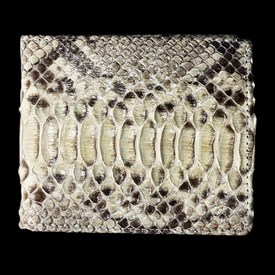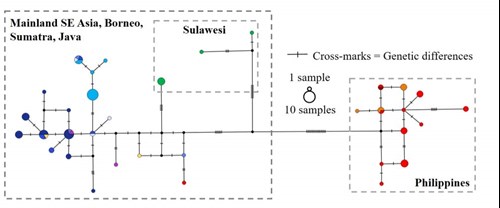First genetic steps towards curbing illegal trade in python skins
24/08/2017 in Conservation
RZSS WildGenes publish genetic structure of the reticulated python in Southeast Asia.
 The RZSS WildGenes lab have been working with Dr Mark Auliya (Helmholtz Institute, Leipzig, Germany) over the past two years, to investigate whether DNA tools could be used to identify the geographic origin of a python skin sample. Reticulated python skins are heavily traded for use in the luxury goods industry. Export of farmed python from certain countries is legal, whilst from others it is not permitted, but complex shipping routes often make the origin of python skins difficult to trace. It is likely that a significant proportion of snake skins used to make shoes and handbags have been harvested illegally from the wild (ITC 2012; United Nations Office on Drugs and Crime 2016).
The RZSS WildGenes lab have been working with Dr Mark Auliya (Helmholtz Institute, Leipzig, Germany) over the past two years, to investigate whether DNA tools could be used to identify the geographic origin of a python skin sample. Reticulated python skins are heavily traded for use in the luxury goods industry. Export of farmed python from certain countries is legal, whilst from others it is not permitted, but complex shipping routes often make the origin of python skins difficult to trace. It is likely that a significant proportion of snake skins used to make shoes and handbags have been harvested illegally from the wild (ITC 2012; United Nations Office on Drugs and Crime 2016).
When genetic differences exist between geographically distinct populations, then DNA can be a useful ‘tool’ in helping to determine the geographic origin. RZSS WildGenes is currently assisting several partners with the development of genetic tools to monitor the illegal trade: from tortoise to tiger and elephants (RZSS blog: Genomics and the illegal trade in African forest elephants).

Above: Genetic differences between samples of reticulated python. Colours represent different geographic locations.
Work recently completed at the RZSS WildGenes laboratory has demonstrated that there are indeed significant genetic differences between Southeast Asian populations of the reticulated python and a paper describing the findings has been published by PLOSONE. It is hoped that these preliminary findings will encourage further research into both the fine-scale genetic structure and the impact of current harvest levels on populations within the native species range.
The WildGenes research has also been able to demonstrate that useful DNA can be extracted from skins that have been chemically treated. During the tanning process a cocktail of chemicals are used to preserve the skin but they also damage DNA in the process, making it difficult to extract useful genetic material. Being able to extract DNA from skins which have been, in part, chemically treated means that genetic ‘tools’ could be both informative and, more importantly, functional for fighting the illegal trade in python skins.
I look forward to updating you with our progress in future blogs.
Gill
Dr Gill Murray-Dickson
Conservation Geneticist
Featured Articles

An update from the Budongo Forest
19/04/2024 in Conservation

Edinburgh Zoo named best zoo in Scotland
15/04/2024 in Edinburgh Zoo


























Follow EZ